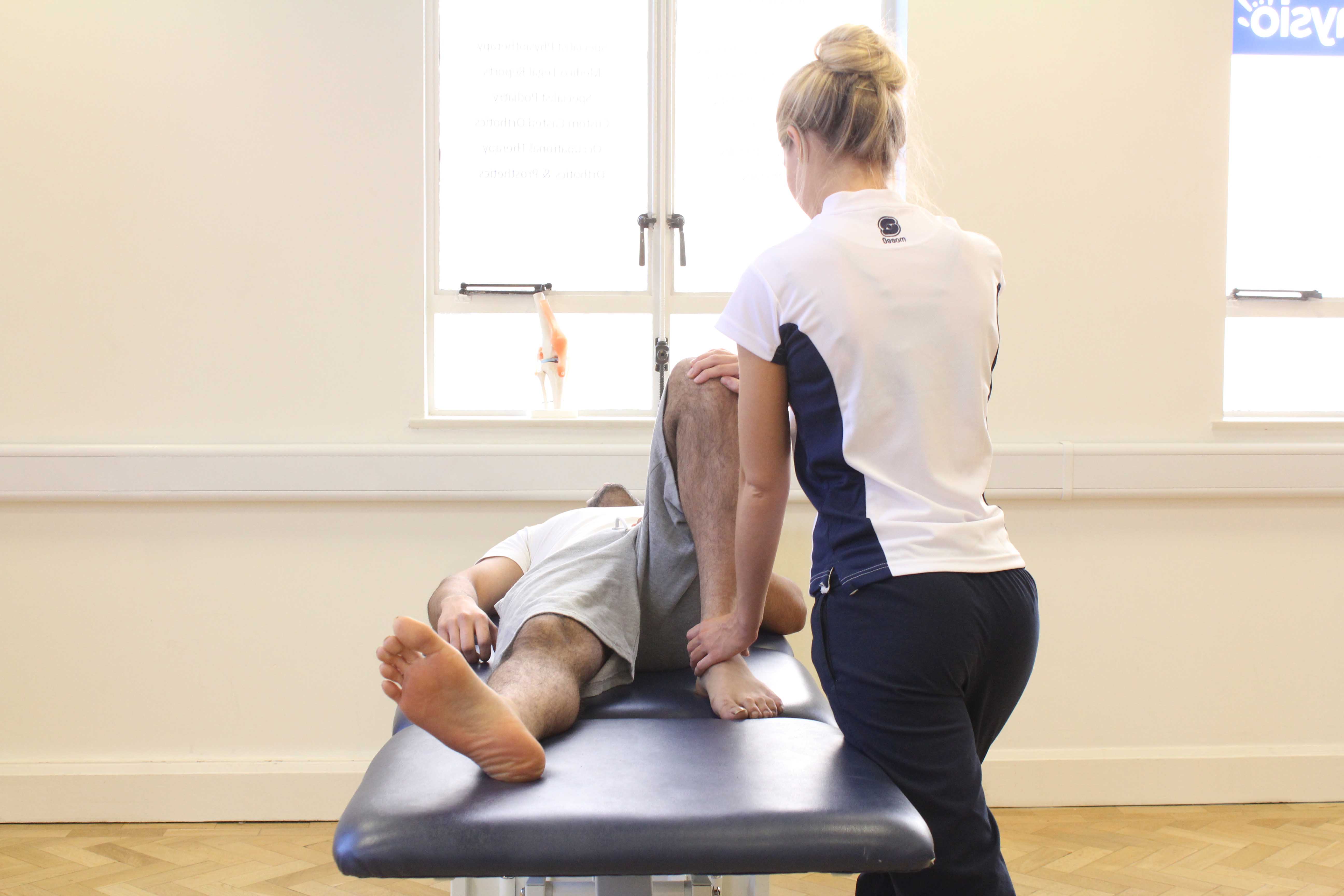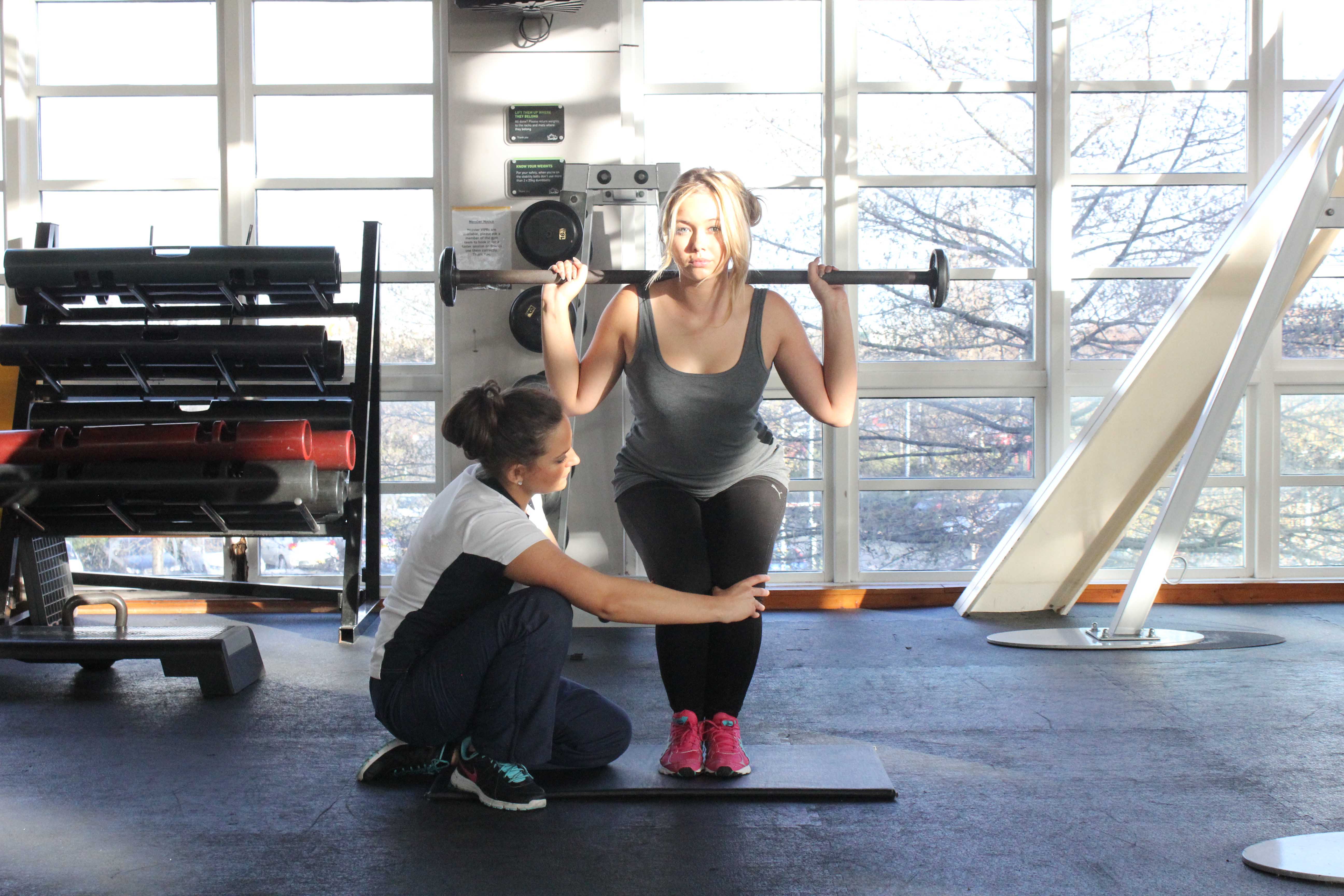What is a ruptured hamstring tendon?
The hamstrings are a group of three muscles that are found on the back of the thigh. The hamstring tendons are thick, fibrous bands of tissue at the back of the knee joint that connect the hamstring muscles to the lower leg. A rupture of a hamstring tendon is a complete tear of one of the hamstring tendons. A ruptured hamstring tendon can be treated with physiotherapy.
How does a ruptured hamstring tendon happen?
A complete tear of a hamstring tendon can occur when the hamstring muscle group (on the back of the thigh) is powerfully contracted. This commonly occurs during kicking or sprinting. This forcible contraction can over stress the hamstring tendon causing it to tear.
 Above: Therapist performing knee assessment
Above: Therapist performing knee assessmentWhat are the symptoms of a ruptured hamstring tendon?
A complete tear of a hamstring tendon causes instant pain at the back of the knee and the back of the thigh. You may also experience a tearing or snapping sensation at the time of your injury. Other symptoms include:
What should I do if I have a ruptured hamstring tendon?
A rupture of a hamstring tendon will not get better on its own. Therefore, if you have this injury, it is advised you go to accident and emergency immediately (i.e. on the same day as the injury). In the meantime you should rest and ice the back of your injured leg to limit the amount of bleeding and swelling within and around the torn ends of the tendon. Ice should be applied to the injured site for 15–20 minutes every 1–2 hours. Ideally, this should be applied using a bag of frozen peas or crushed ice wrapped in a moist cloth or towel.
A ruptured hamstring tendon will not heal by itself. It may, therefore, require a surgical repair. The decision whether or not to perform surgery will depend on many factors. The decision on the management of your condition ultimately rests with your orthopaedic surgeon.
 Above: Therapist performing soft tissue massage on the tissues aound the knee
Above: Therapist performing soft tissue massage on the tissues aound the kneePhysiotherapy treatment following a ruptured hamstring tendon
Whether you have surgery to repair your ruptured hamstring tendon or not, you will definitely require physiotherapy. Your physiotherapist will provide you with a progressive rehabilitation programme to allow you to resume normal activity, work or sports as soon as possible. As well as the exercise based rehabilitation programme, treatment may involve:
What shouldn’t I do if I have a ruptured hamstring tendon?
You should not perform activities that increase blood flow to the injured site if you have ruptured a hamstring tendon. Hot showers, heat rubs, the consumption of alcohol and excessive activity will all increase the amount of bleeding and swelling in the tissues.
Could there be any long-term effects of a ruptured hamstring tendon?
A complete tear of a hamstring tendon is a serious injury which does not heal by itself without appropriate treatment. Appropriate treatment often involves surgical repair. Following surgery, the rehabilitation period is prolonged and it may be a number of weeks before you can walk on the injured leg. It may be a further number of weeks before your muscle flexibility and strength return to satisfactory levels to enable return to your activity or sport.
To arrange a physiotherapy appointment call Physio.co.uk on 0330 088 7800 or book online.

 0330 088 7800
0330 088 7800


































